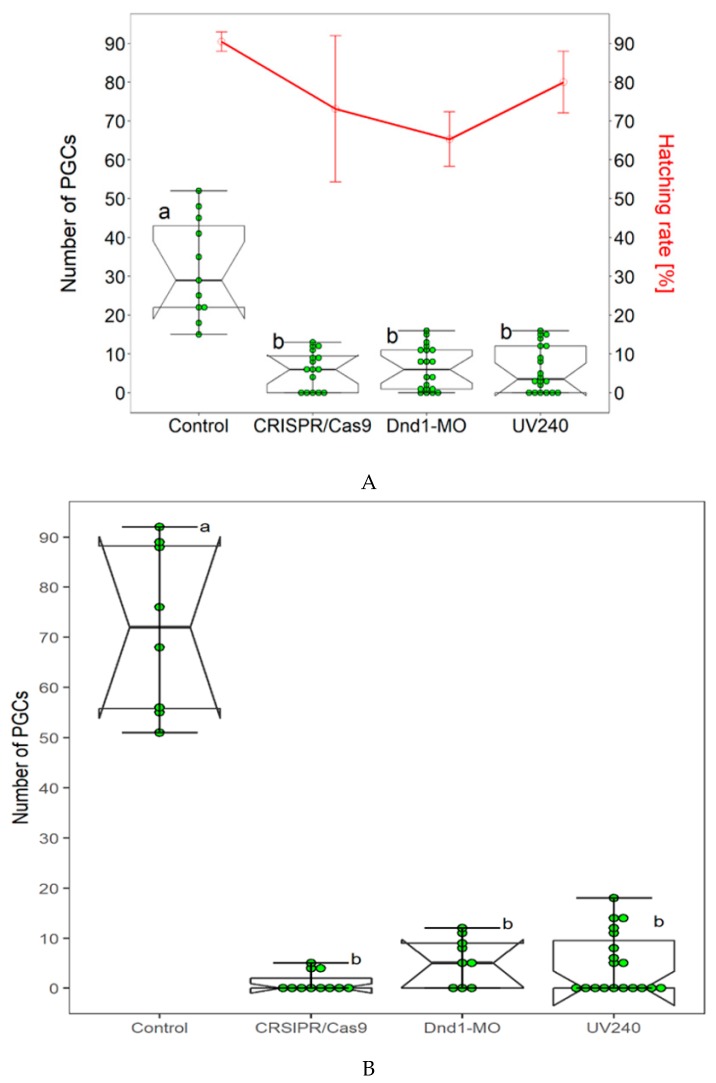Figure 2.
Three different methods to achieve sterility in sterlet (Acipenser ruthenus) have been established and were compared. (A): The control and embryos injected with CRISPR/Cas9, Dnd1-MO and UV240 exposed embryos; injected with FITC-dextran to label PGCs. Number of PGCs were counted in all three treated groups i.e., CRISPR/Cas9, Dnd1-MO and UV240, and in control group. FITC-labeled PGCs were found to be reduced at the neurula to tail bud stage (box plots). Hatching and survival rates were found to be lower in Dnd1-MO embryos (line graph) when compared to the control group. In CRISPR/Cas9 and UV240 irradiation method, hatching and survival rates of embryos did not significantly vary (line graph). The survived embryos from all three treated groups were kept and FITC-labeled PGCs were observed at 22 dpf. Number of FITC labeled PGCs continued to be absent in CRISPR/Cas9, Dnd1-MO and UV240 groups, while larvae from the control group have many FITC-labeled PGCs in the gonadal region (B). Bars with different letters signify a significant difference (p < 0.05).

